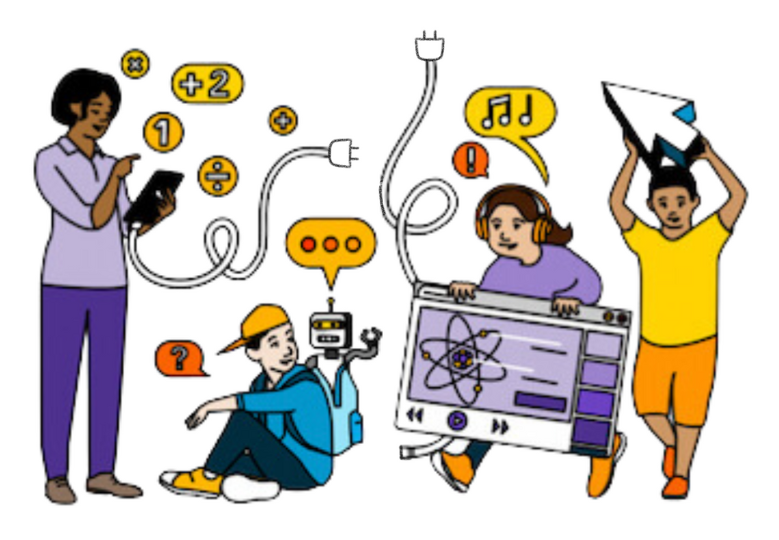
Conferences are a special time to connect with parents and guardians. However, too often, parents and students are more concerned about grades than about the learning that takes place to earn them.
Unfortunately, by making the report card the star of the show, traditional models of parent-teacher conferences may unwittingly reinforce this shortsighted notion that grades are more important than learning. It is time for teachers to use conferences to reclaim the narrative on learning.
Here are four ideas I use to shift the focus of conferences from grades to growth.
1. START WITH AN ICEBREAKER
Conferences can be nerve-wracking for all parties. Why not start with a fun icebreaker? Provide the parent with a note card, and ask them to provide three adjectives to describe their child. On a separate note card, write three adjectives to describe the child from your perspective as their teacher. Then, invite all parties to share their words.
After sharing positive adjectives, I’ve witnessed parents’ eyes light up and demeanors soften. Very often, some adjectives match, which provides reassurance to the parent that the teacher really knows their child.
Another fun and easy icebreaker is to draw the future. We remember things better when we draw them. Ask parents to take two minutes to sketch a picture of an ideal future for the rest of their child’s academic year. Ask the student to do the same. Then share, compare, and discuss. This is a terrific jumping-off point to honor student dreams and jointly make a plan to move toward achieving them.
To save time, you can assign these activities as “pre-work” for parents and classwork for students prior to conference time. Doing so offers low-lift, student-centered ways to set the tone that conferences are about the whole child, not just marks on a progress report.
2. MAKE IT A TEAM EFFORT
The week before the conference, send home a “Grows and Glows” sheet for parents to fill out, helping them reflect on their child’s strengths and areas of concern prior to the conference.
Inviting parents into the discussion makes communication about learning a two-way street. Not only do parents appreciate the opportunity to think and share about their child, but also this strategy provides useful insight into home behaviors and attitudes. Parents are proud to share their child’s strengths. They are equally eager to collaborate on how to address areas of need both academic and social. By building a bridge between home and school, students, parents, and teachers are more likely to work together to harmoniously support student learning goals and general well-being.
Start of newsletter promotion.

Our Edtech Newsletter Is Here
Supercharge your pedagogy with The Wired Classroom! Our monthly coverage will show you how to save time and drive deeper learning with tech.Sign me up
End of newsletter promotion.
3. STUDENT-LED CONFERENCE
Shift the focus from grades to growth by transferring the responsibility of sharing progress from teachers to students. Empower students to lead their own conferences by inviting them to create a slide show to present to their parents.
Slides can include students’ self-identified areas of strength, areas for growth, and goals for the upcoming quarter. This is a terrific way to put students in control of sharing their learning by identifying “proud pieces,” “growth pieces,” or other artifacts that support their self-reflections. It also provides an opportunity for students to practice presentation skills.
For younger students, you may want to provide a slide template—which also provides a strategic introduction to growth mindset vocabulary by allowing you to share phrases like “still learning” and “hasn’t mastered yet.” This helps families understand that learning is not always linear, encapsulated by a single letter grade, but an ongoing, messy process full of trials and triumphs.
When a growth mindset is adopted, students are more likely to take responsible risks in the classroom. Parents are better able to understand that setbacks are a step toward progress and be supportive of students as they continue their learning journey. The end goal becomes learning, not merely a grade on a report card.
4. MAKE A GROWTH CONTRACT
An impactful way to close a conference is with a growth contract. This can be a simple sheet outlining student goals with an area for the student, parent, and teacher to share what they will do to help bring this goal to fruition.
This practice provides students with reliable accountability partners. The contract serves as a physical reminder of a joint commitment from parents and teachers to help the student meet their goals, and when teachers, parents, and students are all working toward the same goals, it is far more likely that those goals will be achieved.
PRIORITIZING MEANINGFUL CONNECTION
The above-mentioned activities can easily be preassigned to parents to engender reflection on hopes, wishes, and goals for their child. They may lead to fruitful discussion in the home setting, which can continue during the conference.
Most important, they signal that conferences can be so much more than a reporting of grades at the end of a quarter. They can be an opportunity to remind students that they are not passive recipients of grades but active participants in their learning and that they are not alone. Conferences, then, become an invitation for students, parents, and teachers to work together to promote growth as allies.



